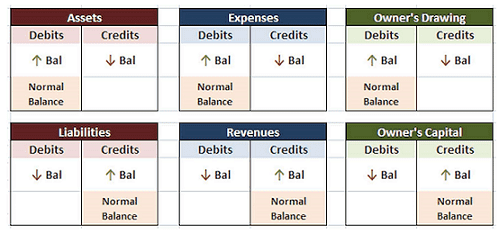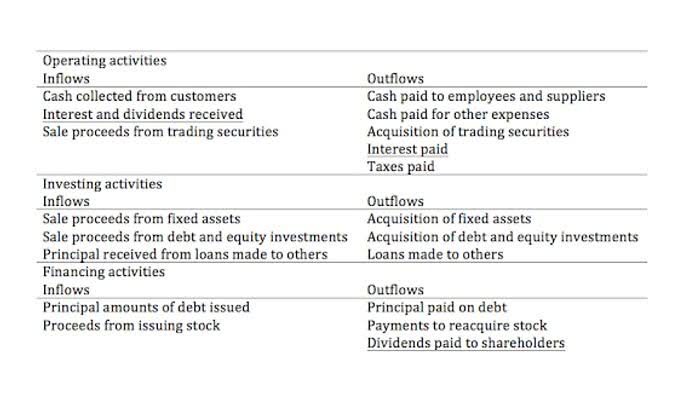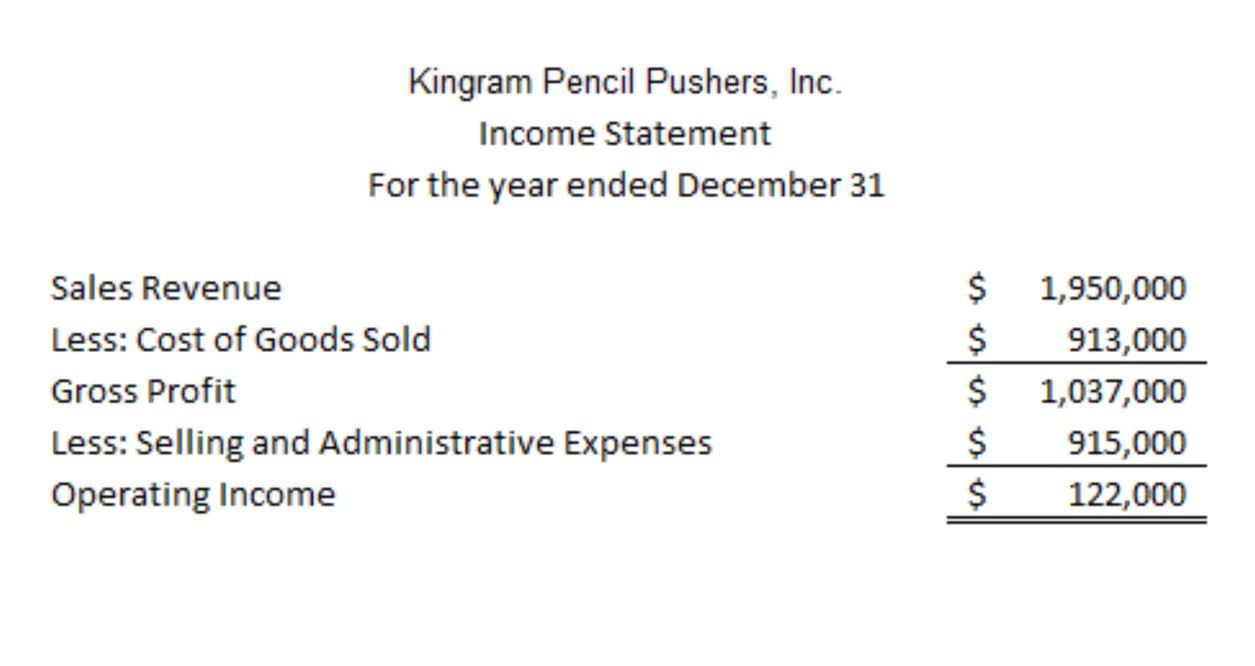Bookkeeping
Why You Should Calculate Your Net Working Capital

As you might suspect, changes in your working capital are tied directly to changes in your revenue and expenses. If you increase your sales volumes or receive interest or dividend payments from your investments, your bank account and working capital will grow. If a business has a line of credit, it might conceal liquidity problems. Thus NWC should always be compared with the remaining balance left on any lines of credit. When a company’s assets are less than its total current liabilities, it may have trouble paying creditors.
How to Reconcile Change in NWC on Cash Flow Statement
Another financial metric, the current ratio, measures the ratio of current assets to current liabilities. Unlike working capital, it uses different accounts in its calculation and reports the relationship as a percentage rather than a dollar amount. Companies can forecast future working capital by predicting sales, manufacturing, and operations. Forecasting helps estimate how these elements will impact current assets and liabilities. For example, if a company has $100,000 in current assets and $30,000 in current liabilities, it has $70,000 of working capital. This means the company has $70,000 at its disposal in the short term if it needs to raise money for any reason.
Working Capital: Formula, Components, and Limitations
By evaluating its current assets and liabilities, a company can determine if its NWC is positive or negative. Keep in mind, this calculation is only one of many ways in which a company’s financial situation can be evaluated. You should take into consideration limitations and other ratios when determining the overall financial position of your business. Simply put, Net Working Capital (NWC) is the difference between a company’s current assets and current liabilities on its balance sheet. It is a measure of a company’s liquidity and its ability to meet short-term obligations, as well as fund operations of the business.
Understanding Working Capital
Selling your fixed assets — hard goods such as equipment, buildings, vehicles, or land — can substantially increase your working capital. However, these items are referred to as “fixed” assets because they often take more time and effort to convert into cash. So, while it may not lead to a fast boost to your capital, offloading any surplus office space or equipment usually makes sense. Alternatively, you can try leasing these excess resources to outside parties for an additional revenue stream.
Ideally, your fixed assets will empower you to generate long-term growth, so you should finance these acquisitions with long-term loans rather than through your working capital. Or you might consider outsourcing specific processes or securing a lease for needed equipment — mainly if the technology is regularly updated. Shortening increase in net working capital your operating cycle — the efforts necessary to convert production assets into cash — is one of the most efficient strategies for boosting your working capital. Automation is not only an invaluable tool in accelerating these processes, but it can also free up your accounting employees for more important tasks.
- In our example, if the retailer purchased the inventory on credit with 30-day terms, it had to put up the cash 33 days before it was collected.
- Current assets are those that can be converted into cash within 12 months, while current liabilities are obligations that must be paid within the same timeframe.
- It’s a calculation that measures a business’s short-term liquidity and operational efficiency.
- A company’s balance sheet contains all working capital components, though it may not need all the elements discussed below.
- A tighter, stricter policy reduces accounts receivable and, in turn, frees up cash.
This review will highlight the areas that are working well and those that need to be upgraded. They are to be settled within 12 months or the normal operating cycle. Current liabilities include accounts payable, short-term notes payable, current tax payable, accrued expenses, and other short-term payables. A company with more operating current assets than operating current liabilities is considered to be in a more favorable financial state from a liquidity standpoint, where near-term insolvency is unlikely to occur. Net Working Capital (NWC) measures a company’s liquidity by comparing its operating current assets to its operating current liabilities.

To explore how automation can impact your business’s working capital, schedule a demo with Invoiced today. With our Accounts Receivable Automation software in place, you’ll have greater visibility into your invoicing and collection efforts and the flexibility to share that data throughout your entire enterprise. Similarly, automated workflows and verification checks will help you drive down billing mistakes and better detect fraud — measures that will positively impact your bottom line. Finally, our Smart Chasing technology will deliver multi-channel reminders that promote prompt payment and remove the busywork from your A/R.
The current ratio is calculated by dividing a company’s current assets by its current liabilities. The formula to calculate the working capital ratio divides a company’s current assets by its current liabilities. Under sales and cost of goods sold, lay out the relevant balance sheet accounts. Remember to exclude cash under current assets and to exclude any current portions of debt from current liabilities. For clarity and consistency, lay out the accounts in the order they appear in the balance sheet. Positive working capital generally means a company has enough resources to pay its short-term debts and invest in growth and expansion.

Sell Some Long-term Assets for Cash
It is calculated by subtracting a company’s current liabilities from its current assets. In simple terms, working capital is the net difference between a company’s current assets and current liabilities and reflects its liquidity (or the cash on hand under a hypothetical liquidation). Working capital is critical to gauge a company’s short-term health, liquidity, and operational efficiency. You calculate working capital by subtracting current liabilities from current assets, providing insight into a company’s ability to meet its short-term obligations and fund ongoing operations. Net working capital is the difference between a business’s current assets and its current liabilities. Net working capital is calculated using line items from a business’s balance sheet.
Horizontal Analysis: What It Is vs Vertical Analysis

For example, if you run a comparative income statement for 2018 and 2019, horizontal analysis allows you to compare revenue totals for both years to see if it increased, decreased, or remained relatively stagnant. How detailed your initial financial statements are depends largely on the accounting software application you’re using. If you’re using an entry-level application, it’s likely you’ll need to use spreadsheets in order to complete the horizontal analysis. https://www.bookstime.com/ At least two accounting periods are required for a valid comparison, though in order to spot actual trends, it’s better to include three or more accounting periods when calculating horizontal analysis. These changes express how much a specific financial item has increased or decreased over time in terms of a percentage. Analyzing percentage changes helps you determine not only the magnitude of the change but also its direction, whether it’s positive or negative.
Step 3: Identify Trends and Patterns
- Finance Strategists has an advertising relationship with some of the companies included on this website.
- Horizontal analysis is used in financial statement analysis to compare historical data, such as ratios, or line items, over a number of accounting periods.
- A company’s financial performance over the years is assessed and changes in different line items and ratios are analyzed.
- Horizontal analysis also makes it easier to detect when a business is underperforming.
- Horizontal analysis is only one technique which can be used to analyze financial information.
- Carrying out horizontal analysis of the income statement and balance sheet helps investors and creditors to determine the current financial position of a company.
For example, MT saw a 50% accounts receivable increase from the prior year to the current year. If they were only expecting a 20% increase, they may need to explore this line item further to determine what caused this difference and how to correct it going forward. It could possibly be that they are extending credit to customers more readily than anticipated or not collecting as rapidly on outstanding accounts receivable. The company will need to further examine this difference before deciding on a course of action. Another method of analysis MT might consider before making a decision is vertical analysis.
Key Learning Points

In horizontal analysis, understanding the concept of base year and current year is crucial. The base year serves as the reference point for comparisons, while the current year represents the year under scrutiny. By comparing the current year’s financial data to that of the base year, you gain insights into changes and trends. The major distinction between horizontal and vertical analysis is that horizontal analysis compares numbers from multiple reporting periods, whereas vertical analysis compares figures from a single reporting period.
Gather Financial Statements
In the above example, some of the expenses were increasing at a much faster rate than the revenue resulting in a reduction in net income. Either way it is important to identify the reason and correct the problem as necessary. In this report, 2019 is identified as the base year, and each line item for the other two years 2020, and 2021 is calculated as a percentage of the same line item for the base year. The horizontal analysis formula used to calculate the % base column is shown in the example below for the revenue line item.

For instance, instead of creating a balance sheet or income statement for one specific period of time, you would also create a comparative income statement or balance sheet that covers quarterly or annual activity for your business. Horizontal analysis isn’t limited to external stakeholders; it is also a valuable tool for companies to evaluate their own financial performance. By comparing financial data over time, organizations can make informed decisions and strategic adjustments. Whether you’re an individual investor, a portfolio manager, or part of an investment team, horizontal analysis provides valuable insights into a company’s financial health and growth prospects.
- Changes between the income from operations and net income lines can be reviewed to identify the reasons for the relatively lower increase in net income.
- Per usual, the importance of completing sufficient industry research cannot be overstated here.
- Most horizontal analysis entail pulling quarterly or annual financial statements, though specific account balances can be pulled if you’re looking for a specific type of analysis.
- Several interesting balance sheet changes are apparent in the tables below.
- You can choose whatever interval (month-over-month, year-over-year, etc.), but each iterative financial statement should be equal distance away regarding when it was issued compared to other bits of financial information.
- Horizontal analysis is most useful when an entity has been established, has strong record-keeping capabilities, and has traceable bits of historical information that can be dug into for more information as needed.
Percentage Changes and Trends
Let’s cut through the noise and get straight to the nitty-gritty of horizontal analysis. You’ve got your numbers, you’ve done the math, but there are still some landmines that can blow up your carefully crafted analysis. To standardize the output for the sake of comparability, the next step is to divide by the base period.
What Is the Difference Between Horizontal Analysis and Vertical Analysis?
- For example, an analyst may get excellent results when the current period’s income is compared with that of the previous quarter.
- Dollar amount changes provide a clear picture of the absolute differences in financial figures over time.
- This can be useful if you’re comparing the numbers with industry averages or rules of thumb, but horizontal analysis is a far better way to gauge the success (or lack) of the strategic decisions being made in the company.
- If you make any alterations to the way your figures are calculated, make sure you take a note of that in your horizontal analysis.
- If you purchased several fixed assets during 2018, the increase is easily explained, but if you didn’t, this would need to be researched.
- It’s one of the most significant skills that employers look for in potential employees.
- Depending on their expectations, Mistborn Trading could make decisions to alter operations to produce expected outcomes.
Step 2: Determine Comparison Methods

What is a Business Valuation and How Do You Calculate It?
Doing this will give you more time to focus on other aspects of your business. You don’t necessarily need to be on every social media platform available. However, you should have a presence on Facebook and Instagram because they offer e-commerce features that allow you to sell directly from your social media accounts. Both of these platforms have free ad training to help you market your business.
- Similar to the capitalization of earnings valuation method, the multiple of earnings valuation method also determines a business’s value by its potential to earn in the future.
- After getting a website or e-commerce store, focus on optimizing it for search engines (SEO).
- This doesn’t mean brokers will not work with buyers, but rather that they may not be well suited to show the buyer listings that make sense, as they typically list only a small handful of businesses.
- A startup without a financial track record is valued at an amount that can be negotiated.
- When valuing a private company, there are a few different formulas that can be used to determine its worth.
- If this competitive advantage is too difficult to maintain over time, this could negatively impact your business’ valuation.
Income-Based Valuation
However, the seller’s discretionary earnings (SDE) method is solely used for small business valuation. A market-based valuation depends less on the specific business than the current market conditions. With the market-based valuation method, the business’s current market value is determined by comparing the recent sale prices of similar companies. To calculate the business’s value using the CCF method, you’ll divide the cash flow from a specific period by a capitalization rate. The present value of your business takes into account current and future cash flows to figure out what your business is worth now as well as later on. This determines whether or not your company is a going concern—a business with stable future earnings, that can keep operating indefinitely without being liquidated.
The Ultimate Guide to the Due Diligence Process in M&A
In this case, the value is based on the net cash that would exist if the business was terminated and the assets were sold. With this approach, the value of a business’s assets will likely be lower than usual—as liquidation value often amounts to much less than fair market value. In short, business http://www.gde.kg/main/gdechtokogda/akcii/4406-global-money-week-2015-v-kyrgyzstane.html valuation is a process of determining the economic value of the company, giving owners an objective estimate of the business worth. For $495, Guidant can help by working with you to complete a financing assessment and creating a detailed valuation report along with an in-depth industry analysis.
Don’t Let Your Emotions Impact the Sale
Many potential buyers analyze more than one business at a time to find the right match for them. The easier you make it for them to see the value of your business, the more likely they take a closer look at it. Having an experienced professional value your business gives you indisputable evidence of what your business is worth. While a business is only worth what someone will pay for it, this is harder for a buyer to negotiate your sales price down than it would be if you just provided a valuation you did yourself. It’s important to properly prepare for your business valuation like you’re getting ready to sell your business. You can do this in many ways, such as getting a third-party certified public accountant (CPA) to help you get your books in order or paying off your debt.
- Now that you understand how to value a business on your own, you’ll want to maximize that value before you sell.
- Suppose you own a construction company in the HVAC niche and looking to use the precedent transaction value calculation to value your business.
- If you’re looking to find out the value of your business, here are three common approaches to getting an accurate assessment.
- Adam Hayes, Ph.D., CFA, is a financial writer with 15+ years Wall Street experience as a derivatives trader.
- Understanding the common methods and why the outcomes will differ can be important for small business owners or corporate executives alike.
An exit strategy also allows you to get the most value out of your business when it’s time to sell. There are a few different options for exiting a business, and the best option for you depends on your goals and circumstances. You can divide the purchase price by annual revenue to arrive at the multiple, or you can multiple annual revenues by a desired times-revenue target to arrive at a potential target price. The times-revenue method attempts to value a business by valuing its cash flow.
Now that you understand how to value a business on your own, you’ll want to maximize that value before you sell. There are both short- and long-term tips that can help you improve your business https://dle-faq.ru/faq/common/11471-kak-sdelat-chtoby-na-sayte-rabotala-srazu-dve-raznye-tooltip-.html valuation and help you get the largest sum possible for your business. In this article, we focused on valuing a business using a multiple of SDE, which is a popular and effective method.
In most cases, once you click “apply now”, you will be redirected to the issuer’s website where you may review the terms and conditions of the product before proceeding. Nav can help you find the right financing for your small business, https://www.moneybackjobs.com/sloan-faculty-of-administration.html from business credit cards to small business loans and more. We give you personalized recommendations for the financing options you’re most likely to qualify for, based on your business credit scores and other information.
Bookkeeping basics: A guide for small businesses
For a small business, this can be a great way to get the benefits of having a dedicated bookkeeper and accountant without the need to build out your own accounting and bookkeeping department. Bank reconciliation is the process of finding congruence between the transactions in your bank account and the transactions in your bookkeeping records. Reconciling your bank accounts is an imperative step in bookkeeping because, after everything http://cc-dog.ru/prizes-eng.php else is logged, it is the last step to finding discrepancies in your books. Bank reconciliation helps you ensure that there is nothing amiss when it comes to your money. This guide will walk you through the different methods of bookkeeping, how entries are recorded, and the major financial statements involved. To set up a budget, gather your financial data, such as income statements, balance sheets, and cash flow statements.
The 8-step accounting cycle: A beginner’s guide
A schedule can include paying vendors at a specified time each month, reconciling monthly bank statements, recording revenue weekly, and making regularly scheduled bank deposits. You can also outsource your bookkeeping duties by contracting with a firm like BINERY that specializes in performing bookkeeping duties for small businesses. Their scope covers most common bookkeeping tasks, from tracking invoices and payments to reconciling accounts payable/receivable statements. Look at the item in question and determine what account it belongs to.
- After all, if you don’t know how much you’re making or where that money is going, you’ll have a hard time finding ways to expand your profitability.
- But what might seem like an overwhelming task isn’t so bad when you break it down to the bookkeeping basics.
- The system you choose to use doesn’t need to be complicated and the ledgers should be straightforward, especially if you have just a few or no employees.
- The year-end reports prepared by the accountant have to adhere to the standards established by the Financial Accounting Standards Board (FASB).
- Before you take on any small-business bookkeeping tasks, you must decide whether a single- or double-entry accounting system is a better fit.
Can I do my own bookkeeping for my business?
The major reports to include are the profit and loss, the balance sheet, and a cash flow analysis. Additionally, the aged accounts receivables and aged accounts payables reports are helpful in knowing which customers have not paid and which vendors are yet to be paid. These reports will help you gain greater insights into the financial https://canpension.ca/articles/canada-pension-plan-a-step-by-step-guide-to-applying-for-benefits health of your small business. Generating financial statements like balance sheets, income statements, and cash flow statements helps you understand where your business stands and gauge its performance. For these reports to portray your business accurately, you must have properly documented records of your transactions.
Adjust Entries at the End of Each Accounting Period
Accounting software makes it easy to store these documents and reference them in case of an accounting error or audit. Managing transactions is a big part of any daily bookkeeping routine. It includes importing and categorizing transactions properly, reconciling these transactions and making sure they’re recorded according to your entry system and accounting method. You should also browse the chart of accounts and make sure it’s organized in a way that makes sense for your business.
Article Access Statistics
Businesses that have more complex financial transactions usually choose to use the double-entry accounting process. After a certain period, typically a month, each column in each journal https://unblockyoutube.us/2023/02/08/get-more-clients-today-10-tips-setting-up-youtube-for-business/ is totalled to give a summary for that period. Using the rules of double-entry, these journal summaries are then transferred to their respective accounts in the ledger, or account book.
What is transactional accounting?
On top of that, you need the data used in bookkeeping to file your taxes accurately. The specific amount of an emergency fund may depend on the size, scope, and operational costs of a given business. Regardless, work with your bookkeeper and accountant to ensure the amount of cash left in the bank is sufficient for unexpected costs. Finding the right level of cash to be kept on hand requires a proper cash flow forecast and cash monitoring. Businesses might not want to keep all cash in the bank, as having an excessive amount of cash in the bank could mean missed opportunities in investment income. Efficient bookkeeping involves foresight, meaning that a business should always plan for upcoming financial events, including tax time.
Instead, an account is a record of all financial transactions of a certain type. The next step in the accounting cycle is to post the transactions to the general ledger. Think of the general ledger as a summary sheet where all transactions are divided into accounts.
At the end of the period, you’ll “post” these entries to the accounts themselves in the general ledger and adjust the account balances accordingly. It requires you to record each financial transaction just once in your overall bookkeeping record. This method can work for freelancers or sole proprietors with no more than one or two business transactions a month.
These accounts and their sub-accounts make up the company’s chart of accounts. Assets, liabilities, and equity make up the accounts that compose the company’s balance sheet. At the end of the appropriate period, the accountant takes over and analyzes, reviews, interprets and reports financial information for the business firm.
The 10 Best Online Bookkeeping Services of 2022

Ignite Spot Accounting delivers heftier reports than many other cloud accounting providers we checked out for this piece. Along with typical financial reporting (like profit and loss reports and balance sheets), you’ll get a KPI (key performance indicator) report and profitability analysis, among others. However, Ignite Spot doesn’t list its virtual accounting prices upfront.
Creating Reports to Improve the Business
- A corporation limits your personal liability for business debts just as an LLC does.
- You do the same thing for the products and services you buy and sell, so you can add them easily to transactions.
- This trend has created an opening for multilingual speakers to offer specific services, such as document translation and the translation of website information into languages for use in other markets.
- Here’s how to choose a business checking account—and why separate business accounts are essential.
- This service is ideal for business owners who want to get their bookkeeping in order but don’t have the time or resources to do it themselves.
- Below are some of our current top picks for small business accounting software that combine value for the cost, combined with the features we consider essential for running your business accounting needs.
Posting debits and credits to the correct accounts makes reporting more accurate. For tax and accounting, Bench also scored high, although it doesn’t offer the ability to file sales tax returns, so we recommend Bookkeeper.com for that feature. The user review score of Bench is high as well, at almost a perfect score.
Online Bookkeeping by Bench
- They also do not file your taxes for you, although they will be able to organize your books in preparation for tax season.
- A professional accountant (or Certified Public Accountant) can help with business tax planning, file your corporate tax return, and make suggestions to help you improve cash flow.
- The best online bookkeeping services will provide you with as many services as you need — and none that you don’t need.
- In terms of tax and consulting, it will file your income tax return but doesn’t handle sales tax or CFO advisory services.
- Apps like Stripe, GoCardless, Vend, and Shopify connect seamlessly and sync data with Xero.
- For example, if you’re a wedding planner, you could partner with a florist, photographer, catering company or venue.
- That said, the depth of its features might be overwhelming to very small businesses but welcomed by companies with more advanced needs.
Look at the item in question and determine what account it belongs to. For example, when money comes from a sale, it will credit the sales revenue account. Making sure transactions are properly assigned to accounts gives you the best view of your business and helps you extract the most helpful reports from your bookkeeping software. They also make adjustments to your books to ensure they’re tax-compliant. In our evaluation of 1-800Accountant’s Enterprise plan, it took a hit in pricing because it charges $399 a month, which is more expensive than many of its competitors.

Expert Analysis
- Consider shopping estate sales and flea markets for hidden finds at a low cost and then listing them for a profit online.
- Like Bookkeeper.com, Merritt works with businesses who use QuickBooks.
- In the accounting software, the primary journal entry for total payroll is a debit to the compensation account and credits cash.
- It also offers full-service bookkeeping, meaning that its team will do the bookkeeping for you.
- Transactions will appear in your books automatically, and you can say goodbye to manual receipt entry.
Here’s everything you need to produce a reliable financial forecast for your business. This is an expensive time to be running a small business, but there are ways to protect yourself from the effects of inflation. We consider the opinions of users and the service’s ratings on various review sites.
Developing a bookkeeping routine prevents you from accidentally forgetting important steps in the accounting process. Bookkeeping is different from accounting in that it is the critical first step in tracking all business activities. While bookkeeping provides oversight into each individual transaction (in order to catch discrepancies and correct mistakes), accounting provides a thorough analysis of these numbers. Despite the importance of accurate bookkeeping practices, most people don’t feel entirely confident with maintaining detailed business finances. Whether it’s a lack of interest or knowledge, many businesses outsource this process to a professional bookkeeper to ensure accurate and healthy finances all around.
You can choose a lower-cost “light” version of accounting software that gives you just what you need, without all the advanced features. You can also match related transactions, such as an invoice entered into the system and a corresponding payment that has come through. bookkeeping You can split transactions that should be assigned to multiple categories, make notes, and reconcile your accounts with your bank and credit card statements. Daily accounting work typically involves paying bills, sending invoices, and recording payments.
Bookkeeper360: Best Online Bookkeeping Service for Xero Users

All businesses, other than sole proprietorships with no employees, must have a federal employer identification number. Submit your application to the IRS and you’ll typically receive your number in minutes. An LLP is similar to an LLC but is typically used for licensed business professionals such as an attorney or accountant. Your business idea also doesn’t have to be the next Scrub Daddy or Squatty Potty.
You need to have insurance for your business, even if it’s a home-based business or you don’t have any employees. The type of insurance you need depends on your business model and what risks you face. You might need more than one type of policy, and you might need additional coverage as your business grows. In most states, workers’ compensation insurance is required by law if you have employees. For example, let’s say you’re starting a small business that sells miniature birdhouses for fairy gardens. Your variable costs are $0.40 per birdhouse produced, and you sell them for $1.50 each.
11 Bookkeeping Tips for Truckers: The Basics

While they’re theoretically distinct, the line between them is somewhat blurred. If you’re considering expanding your trucking company or adding new services, accurate financial projections are essential. Remote Books Online can create detailed financial forecasts to help you assess the feasibility of your growth plans.
The Ultimate Guide to Truckers Bookkeeping for Your Trucking Company
Remember, it can be surprisingly hard to catch up on trucking records once you’ve fallen behind. It becomes even worse if you also neglect to separate your business and personal transactions. Fuel cards can automatically track, organize, and display the information you need to fill out your IFTA expense reports. If you’re also using truck management software, you can usually link the two and automate your IFTA responsibilities completely. Yes, trucking bookkeeping can be incredibly affordable, especially when you consider the potential tax deductions you could find. Our detailed expense analysis can identify areas where you can cut costs and improve your cash flow.
Try FreshBooks today to stay on top of your books and hit the road to business success.
Trusted by over 20,000 owner-operators, ATBS has been helping truck drivers manage their books and file taxes since 1998. The company’s founders began their careers in the family trucking business, eventually converting all 350 drivers of their team to owner-operators. Today, they are the largest tax and accounting firm for owner-operators, offering a variety of service packages to simplify the truckers bookkeeping business side of driving. Cash flow can be a challenge in the trucking industry, where clients often take their time to pay invoices. Trucking companies that need to track income and expenses and manage trucking operations in one platform should use trucking accounting software. As an owner-operator, effective bookkeeping is essential to maintain the profitability of your trucking business.
- Now that you know what you need to do, it’s time to start implementing good habits and putting your truck driver accounting processes to the test.
- Credit cards with fuel rewards are ideal, given the amount truckers spend on gas.
- Timely invoicing also helps with maintaining accurate financial records and regulatory compliance.
- Our services include Cash Receipts, Cash Disbursements, Accounts Receivable, Accounts Payable, Sales Tax Reports, Payroll including Quarterly Reports & W-2’s.
- It’s more affordable than the combined cost of QuickBooks and RLS, but it’s more expensive than Rigbooks and Zoho Books.
Trades and Home Services
- It can also enhance the professional image of your business because it shows customers and vendors that you have a separate financial identity and you’re managing your business responsibly.
- Bookkeeping and tax services specially designed for trucking companies also make it easy to access and complete all required tax forms for your business.
- Issue invoices, generate expense reports, collaborate with drivers and get reports on your financials whether you’re in the office or working remotely.
- Other QuickBooks trucking integrations require complicated setups and third-party connectors.
- To qualify for a per diem deduction, you must be away from home for the night.
- These reports can help you identify areas where costs can be cut, or revenue can be increased.
For instance, trucking companies have the flexibility to post related bills together with the invoice or post the expenses and bills separately. This allows you to customize your billing workflows based on your specific requirements. You should start bookkeeping with the first money transaction in your company.
- For instance, trucking companies have the flexibility to post related bills together with the invoice or post the expenses and bills separately.
- Executing proper transportation accounting procedures requires as much training and expertise as the transporting itself.
- What’s more, we didn’t find any integrations that could solve this weakness, unlike QuickBooks which integrates with trucking software like RLS.
- If you want something easier to use, then our top recommendation is Rigbooks.
Save your records.
Know that all of your transactions check out with new business accounting features. Don’t miss a single expense by adding one of 70 popular apps that integrate with FreshBooks. Add payroll expenses thanks to Gusto, accept online payments with Stripe and PayPal and track mileage with Everlance. Discover how easy it is to do your bookkeeping with software that’s designed for the trucking industry, not accountants.

Open a Checking Account for Your Business

The IFTA office in your home state will allocate your payments to the proper jurisdictions and determine whether you owe more or deserve a refund. Truckers must choose between the two fundamental methods of accounting, the cash and accrual bases. They impact your tax return significantly, so consider consulting an accountant before choosing one.
Streamlining processes to send invoices sooner can help improve your cash flow position. With an S-corp, you’ll have to run payroll to pay yourself just as you pay any employee. However, any income remaining after payroll and expenses can be withdrawn with no payroll tax. Trucking management software (TMS) can help you keep track of everything easily.

Fortunately, it doesn’t have to take up too much time or energy if you plan ahead. For example, transportation management software, also known simply as trucking software, https://www.bookstime.com/ is a must-have for owner-operators. It serves as a digital hub and tax center from which you can manage all of your paperwork and filing responsibilities.
